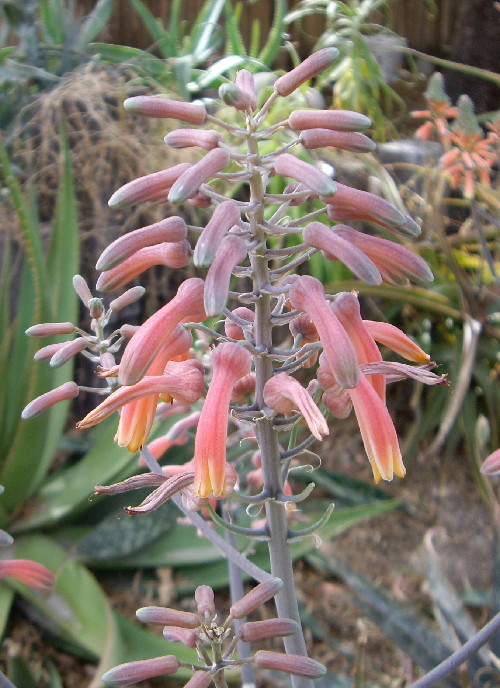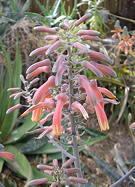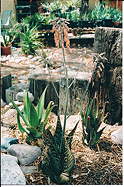This variable and widespread species of tropical Africa has fairly open rosettes, usually solitary but occasionally clumping. The 16 to 20 leaves are green with scattered white spots that may be confluent and “H”-shaped or assembled into transverse bands. Like many members of the A. saponaria group, the leaf-tips tend to dry and curl naturally and so is not a cause for alarm or reason to start watering excessively. Also, the flowers of this group have a prominent globular swelling at the base of the flower tube. In A. lateritia the flowers are various shades of red-orange and are arranged in subcapitate or subcylindric racemes in branched panicles up to a meter or more tall. We offer robust seedlings from controlled pollination of plants collected Dec 20, 2003, by Mary Wilkins and Anthon Ellert (WE 1327) north of the village of Mwatate, on the road between Voi and Maktau, south of Tsavo National Park West in Kenya. At the time the area was being encroached upon by expanding clearing of the land for development. Ellert reports that plants tolerate full sun and are repeat bloomers in his garden in Tucson, AZ, flowering about April and again in October or November. HBG 93168, $6.

Published in the Cactus and Succulent Journal, Vol. 82 (2), March - April, 2010

